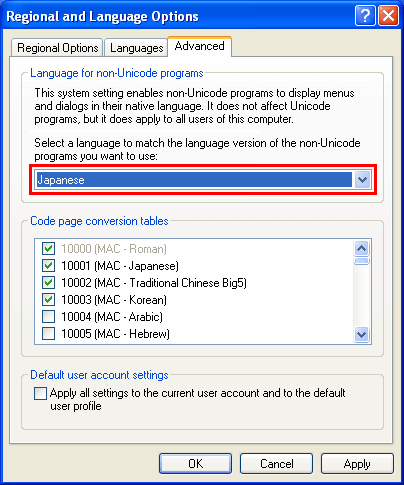

- #Windows 7 japanese applocale install
- #Windows 7 japanese applocale for windows 10
- #Windows 7 japanese applocale windows 7
- #Windows 7 japanese applocale windows
Since Windows only allows one locale at a time and changing it requires a reboot and administrative rights, running a non-Unicode program can take a lot of time. However, the language environment in based on the “system locale†variable which needs to match the app language. If the app does not use Unicode encoding, the operating system needs to emulate the environment required to properly display the characters. If you are trying to run an application on your system and the GUI displays garbage characters, the problem might be related with the text encoding system. The program allows you to bypass this issue by simulating a “system locale†variable for the target application. Verify the key combination in the table, and click OK.Microsoft AppLocale is a compact tool designed to help you run non-Unicode applications without having problems in displaying the characters from the app interface. Specify a new combination such as Ctrl+ F2, and click OK. Note: This function is generally assigned to a key that physically exists only on Japanese keyboards.ĭouble-click the currently assigned key in the first column. Locate the IME ON/OFF function in the table. In the Editing operation and behavior section, click Advanced. Under Advanced Settings, click Open advanced settings. In Region and Language settings, select the Japanese keyboard, and click Options. Reconfigure the Input Mode Keyboard Shortcut Note: You will need to reboot your computer for the locale change to take effect. Open the Administrative tab, and click Change system locale…. In Region and Language settings, click Additional date, time, & regional settings under Related settings. Set the non-Unicode program input language Select the language, click Next, and proceed to install. In Region and Language settings, click Add a language and search for Japanese.
#Windows 7 japanese applocale install
Windows Settings > Time & Language > Region and Language Install the Japanese IME Keyboard
#Windows 7 japanese applocale for windows 10
Note: The configuration steps for Windows 10 are performed in the Region and Language settings:
#Windows 7 japanese applocale windows 7



 0 kommentar(er)
0 kommentar(er)
